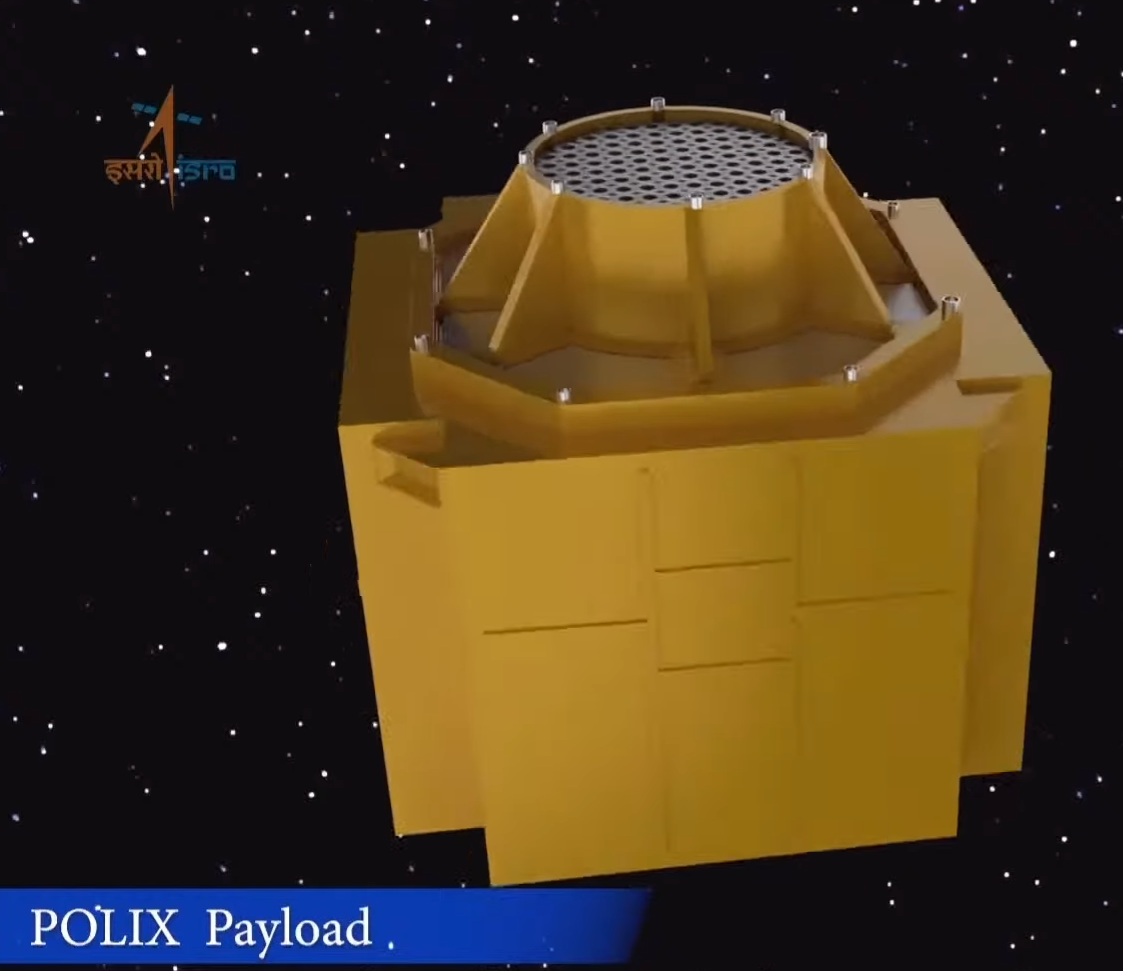XPoSat (X-ray Polarimeter Satellite), India’s first dedicated polarimeter mission to study the various dynamics of bright astronomical X-ray sources under extreme conditions The spacecraft carries two scientific payloads in low earth orbit. The primary payload POLIX (X-ray polarizing instrument) will measure polarizing parameters (degree and angle of polarization) of photons of astronomical origin in the 8–30 keV energy range XSPECT (X-ray Spectroscopy and Timing) payload will provide spectroscopic information in the 0.8–15 keV energy range.

Emission mechanisms from various astronomical sources such as black holes, neutron stars, active galaxy nuclei, pulsar gas nebulae. They arise from complex physical processes and are challenging to understand. While spectroscopic timing by various space-based observatories provides a wealth of information, the precise nature of emission from such sources still poses deeper challenges for astronomers. Polarimetric measurements add two more dimensions to our understanding, polarization degree and polarization angle and are a good diagnostic tool to understand emission processes from astronomical sources.
XPoSat Payloads
X-ray Polarimeter Satellite (XPoSat) signifies India’s venture into dedicated polarimetry missions, aiming to unravel the complexities of bright astronomical X-ray sources under extreme conditions. Equipped with two scientific payloads orbiting in low earth orbit, XPoSat holds significant promise for astronomical exploration.
XPoSat Mission Objectives
- POLIX (Polarimeter Instrument in X-rays):
- Operational Range: Medium X-ray energy band of 8-30 keV, developed by Ramam Research Institute (RRI) in collaboration with U R Rao Satellite Centre (URSC).
- Components: Includes a collimator, a scatterer, and four X-ray proportional counter detectors surrounding the scatterer.
- Functionality: Measures degree and angle of polarization in X-rays, focusing on about 40 diverse astronomical sources over the mission’s anticipated 5-year lifespan. Aims to be the pioneering payload dedicated to medium X-ray energy band polarimetry.

- XSPECT (X-ray Spectroscopy and Timing) Payload:
- Operational Range: Soft X-rays spanning 0.8-15 keV.
- Capabilities: Provides high-resolution spectroscopic data and precise timing, employing Swept Charge Devices (SCDs) for an effective area exceeding 30 cm² at 6 keV with superior energy resolution.
- Applications: Monitors spectral state changes, line flux alterations, and temporal variations in soft X-ray emissions from various sources like X-ray pulsars, black hole binaries, neutron stars, AGNs (Active Galactic Nuclei), and Magnetars.

Advancing Astrophysical Understanding
The emission mechanisms from astronomical sources such as black holes, neutron stars, and active galactic nuclei are rooted in complex physical processes. While existing observatories offer substantial data, understanding these emissions remains a profound challenge. The incorporation of polarimetry measurements in XPoSat introduces critical dimensions—degree and angle of polarization—enhancing our comprehension of these cosmic emissions. Combining polarimetric observations with spectroscopic data seeks to refine theoretical models governing astronomical emission processes.
XPoSat emerges as a cornerstone in Indian scientific endeavors, steering the nation’s scientific community towards groundbreaking research aimed at unraveling the cosmic enigmas shrouding astronomical emissions. This mission aspires to be a catalyst in shaping new frontiers of astrophysical understanding.









